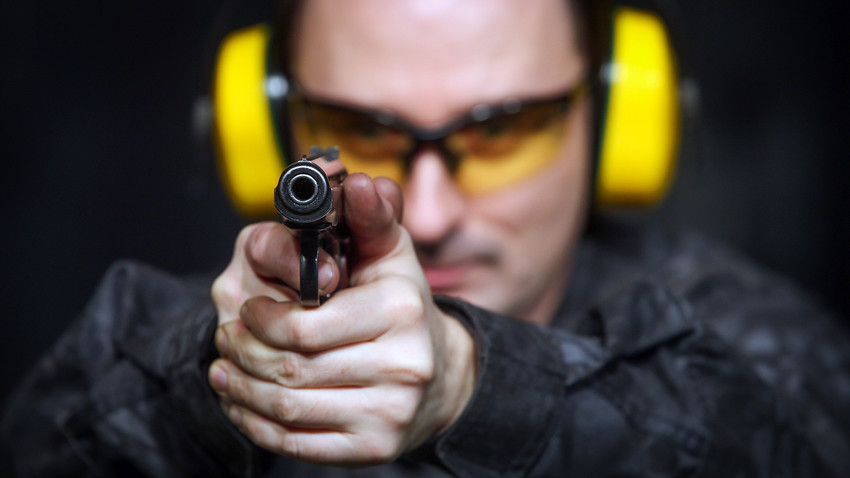Top three modern upgrades of Soviet guns

Turning the SKS into the Benelli M4
In mid-January Israeli company FAB Defense announced the product launch of the customized Simonov Self-loading Carbine (the SKS, the most popular rifle on the Russian civilian market), which makes this venerable Soviet firearm virtually like the state-of-the-art Italian-made Benelli M4 which is in service with the U.S. special forces.
It has a new chassis, manufactured under the name of M4 SKS. It is of reinforced polymer construction with an M4 carbine collapsible buttstock.
The rifle is being marketed with three chassis options:
- with shock-absorbing buttstock;
- the classic version with folding buttstock;
- and with a buttstock wit
h pre-install ed
The new kit includes a convenient pistol grip, Picatinny rails (which could not be fitted on the old SKS) and an enhanced magazine release lever.
The price of the SKS rifle upgrade on the U.S., European and Russian market ranges from $200 to $300 depending o
Makarov pistol reborn as the P-M18
This, to put it bluntly, is a souped-up version of the Soviet-era PM Makarov Pistol, retaining the design features of the original. Anyone who has ever picked up a Makarov will know how rough, unwieldy and inconvenient it is in use by today's standards. That's why the P-M18's designers have replaced a number of materials, employed modern polymers and considerably improved its ergonomics.
There are two versions of the handgun on the market - sporting and nonlethal trauma gun. The difference is in the configuration of the barrel and the caliber of the rounds. While the sport pistol takes standard 9x18 mm PM rounds, the "civilian trauma gun" uses 10x23T rounds with a 0.7 g rubber bullet.
According to the manufacturer, the frame and slide are made of rolled chrome alloy steel with enhanced protective properties. The aiming sight has been changed, and the slotted pattern on the sides of the slide has been increased in size at the rear, and a similar slotted surface has been made at the front: This makes the grip more reliable and convenient when the slide is being pulled back. The designers have refined the trigger mechanism, seating it on a separate pivot pin and reducing the distance the release has to travel.
All the variations of the pistol use a standard Makarov pistol magazine.
Reincarnation of the Dragunov SVD as the SK-16 carbine
The SK-16 project is not just an upgrade of the Soviet-era Dragunov sniper rifle, but represents a substantial evolution of it. Externally, moreover, the new rifle looks more like a futuristic weapon from a computer shooter game than a real front-line combat rifle.
The SK-16 incorporates a number of ideas that are original for the Russian arms industry. They include an altered frame design. The new unit now consists of two parts, like all modern foreign guns. The "upper receiver" houses mountings with guides for the barrel and bolt assembly, while the "lower" part holds the weapon's "non-moving" parts - the firing mechanism, magazine chamber, etc. Because of this design, the rifle's aiming sight no longer loses its accuracy from vibration after a couple of shots.
What is more, the rifle has been rechambered for 7.62x51 mm NATO rounds. The barrel is protected by a polygonal metal handguard with perforations, while the rectangular frame houses the main components. There is a selection of other attachments.
In addition, the carbine's post-firing gas venting system has been changed, rectifying a fault in the old Dragunov which adversely affected the precision of fire.
According to the designers, the rifle harnesses the gas venting system to promote automatic operation with the help of a special muzzle device. The unit is located at the muzzle end of the barrel, allowing the rifle's mechanisms to function correctly without disturbance from excessive vibration of the barrel during the passage of a round.
Moreover, the barrel and bolt carrier group are able to move. When the rifle is fired, they are designed to travel back as a result of the recoil. Because of this the rifle has an extended recoil impulse, which ought to have a positive impact on its stability during use and, as a consequence, on its accuracy of fire.
If using any of Russia Beyond's content, partly or in full, always provide an active hyperlink to the original material.
Subscribe
to our newsletter!
Get the week's best stories straight to your inbox